The Floods
The history of Soldiers Grove is filled with stories of Kickapoo River floods. Nothing describes the battle with the river better than the U.S. Department of Energy’s 1994 report, “Rebuilding for the Future…A Guide to Sustainable Redevelopment for Disaster-Affected Communities.”
“The river hit the town with its first major flood in 1907. It dumped record amounts of water into the community again in 1912, 1917, and 1935. The 1935 flood made it clear to the villagers that flooding was a serious and permanent problem. In 1937, Soldiers Grove joined other Kickapoo communities in petitioning Congress for a flood control project.
It was not until 1962 that Congress approved a flood control plan for the Kickapoo River Valley—a dam and recreational lake near the top of the river, and a supplemental levee at Soldiers Grove, all to be built by the U.S. Army Corps of Engineers. Construction of the dam and design work on the levee began in the late 1960s.
In the three decades that Soldiers Grove waited for dam construction to begin, the Kickapoo delivered four more floods, including a disastrous inundation in 1951 which severely damaged downtown buildings and its economic foundation as well.
In 1974, the State of Wisconsin required Soldiers Grove to pass a floodplain zoning ordinance, a law that villagers felt would do more damage to property than the river itself. The law prohibited any new building in the business district and placed strict limitations on maintenance and repairs to existing buildings. The ordinance was a severe blow to the economic heart of the community.
The Corps of Engineers presented its final plan for a levee in early 1975. The villagers had hoped that the levee would solve both the flooding problem and the need to comply with floodplain zoning. But when the engineers unveiled the details of the proposed levee, their message was depressing. The levee would cost some $3.5 million, yet would protect about $1 million worth of property. Each year for the next 100 years, the village would have to raise funds equal to twice its 1975 property tax levy to pay for maintenance of the flood control structure. And the dike would do little to solve many of the village’s problems—the outmigration of young people to urban areas, the severe blight of the downtown, the feeling that Soldiers Grove was dying.
Their backs against the wall, community leaders came up with a radical proposal, believing it was the only way to save the village. They suggested that the federal government spend the same $3.5 million to help the community evacuate its floodplain and rebuild the business district on higher ground. Federal assistance would amount to 60% of the project’s total cost, with state, local and private investments making up the balance.
With a small planning grant, Soldiers Grove hired a team of University of Wisconsin specialists headed by landscape architect Professor Phil Lewis to study the feasibility of relocation. The team concluded that relocation made good sense.
In 1977, the village invested its own funds to purchase a site for the new downtown and began the extension of utility services. However, federal agencies were slow to support relocation. For three years—from the time the idea was first proposed in early 1975 to 1978—the village’s appeals for assistance were denied.
Then in July 1978, the Kickapoo hit the village again, with the largest flood in history. The flood inflicted a half-million dollars in damages, completely destroying several buildings, including the community’s new concrete block bank. While no one could have wished for such a flood, it accomplished what community leaders had not been able to do: It galvanized opinion inside and outside the village that Kickapoo River flooding was inevitable, and that relocation must proceed at once. With the help of then-U.S. Senators William Proxmire and Gaylord Nelson, the flood jarred loose the support of federal agencies. The Secretary of the U.S. Department of Housing and Urban Development granted the village $900,000 in the fall of 1978 so that relocation could begin.”
In August of 2007, the biggest flood in the history of Soldiers Grove came roaring through the Village. The Kickapoo River quickly topped the levees and water didn’t recede for about ten days. Soldiers Grove escaped serious flood damage, however, as the town had been moved uphill years before.
In 2007, Soldiers Grove’s central riverside municipal park and campground, where the downtown once stood, received little damage. The Solar Village was unscathed. “The recent flood devastation reinforced that we did the right thing. I don’t ever want to go through another flood like 1978,” said John Young, a local merchant. “Common sense tells me the move was the right thing to do. All we have to do is drive over to Gays Mills and look at what they are facing, the same things that we faced years ago. They are having village meetings to decide what to do to reduce flood impact.” Said Jerry Moran, Crawford County Sheriff. Moran said he was proud to be a part of the relocation project. “It was a huge project for a small community, and it was successful,” Moran said. “What else can you ask for?”
Publisher Charley Preusser said it best in the headline of the June 12, 2008 Crawford County Independent-Kickapoo Scout, going on to describe a flood that eclipsed the record flood of 2007. The torrents of rain that had poured into the upper reaches of the Kickapoo Valley filled the river and village after village was overtaken by floodwaters moving relentlessly downriver. The raging river reached Soldiers Grove in the darkness of night on Sunday, June 8. By daylight, village president Laurel Hestetune declared it the worst flooding the village had ever experienced. Soldiers Grove was forced to evacuate Pine Street by boat. And area above the park, known as The Flat, was also evacuated, a first for the village. But it was the park—Soldiers Grove’s former Main Street—that took the direct hit. The river breached a levee and tore through the park, unearthing broken glass, shards and other debris that had once served as fill in the basements of Old Town. The park looked as if it had been struck by a bomb. The pavement in the parking lot was completely lifted off. Glass and silt replaced grass and soil. The playground equipment, ball field, skateboard park, basketball hoops and tennis courts were gone, as was a gazebo. Damage was estimated at $2,000,000. Within a week, work was begun in earnest. The Village Board orchestrated a clean-up effort that involved every available excavating contractor. The ground was scraped, shaped and re-seeded. Sidewalks and curbs were poured. Fences were replaced and monuments were repaired. Plantings began to look a little less battered. And just over three months later, over 3,500 people attended the Driftless Area Art Festival in a restored park. On nearby Pine Street, the newly re-opened Roth House Bed & Breakfast hosted an open house, and neighbors were undertaking restoration and raising of homes that had been underwater only a dozen weeks before. Once again, the wisdom on moving the town was underscored by the Kickapoo River, and the can-do attitude of the village was put on full display.

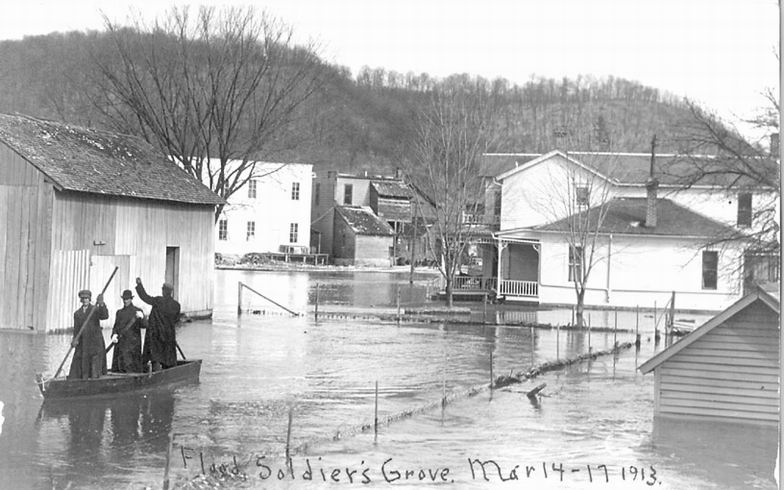 1913 Flood
1913 Flood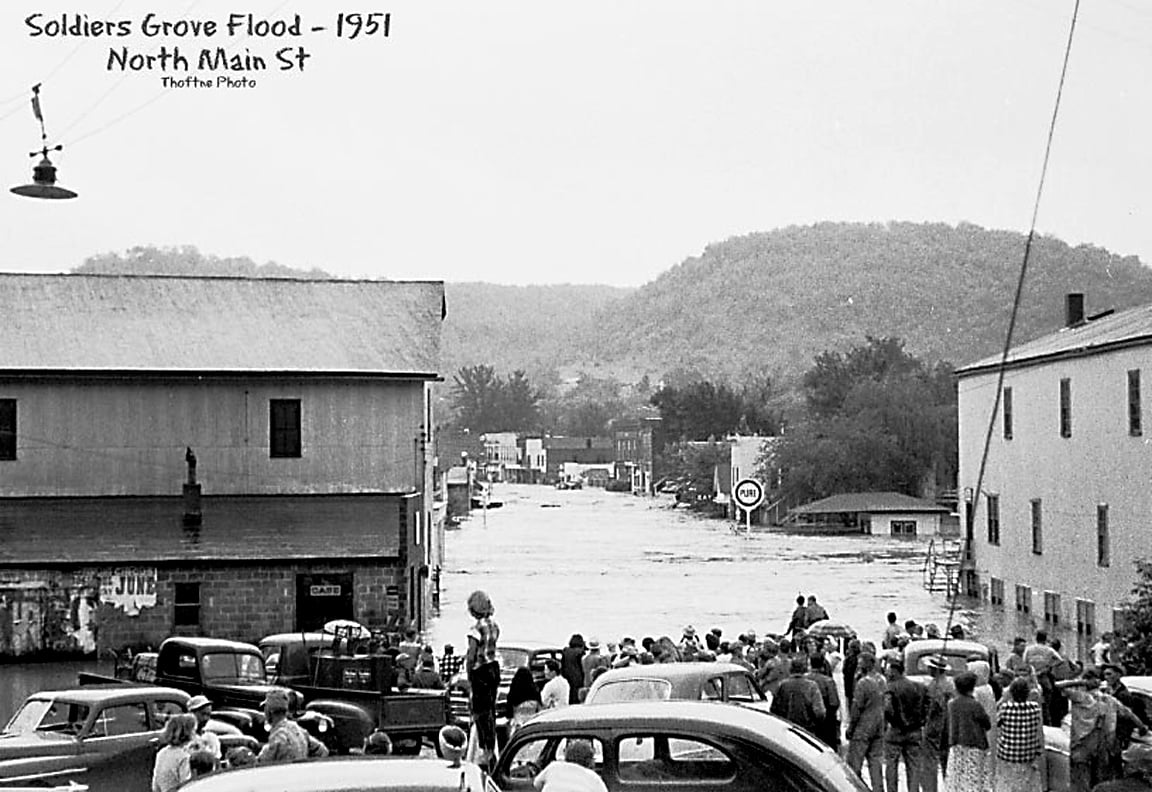 Flood
Flood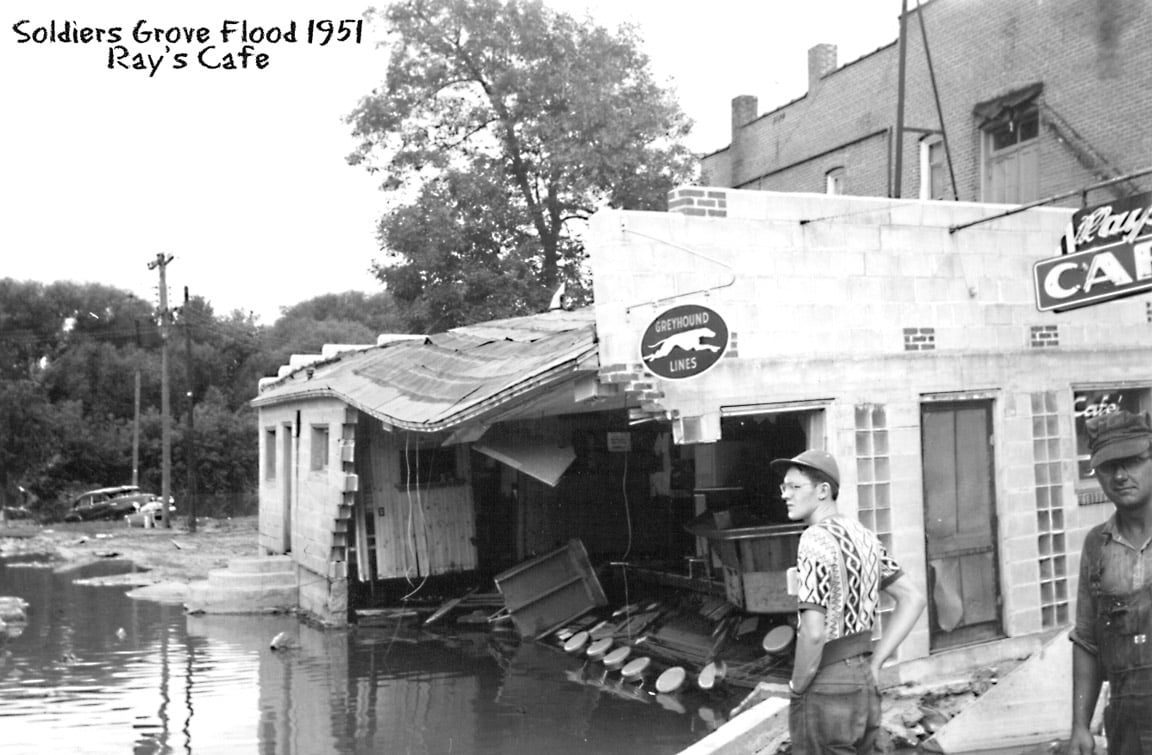 Flood
Flood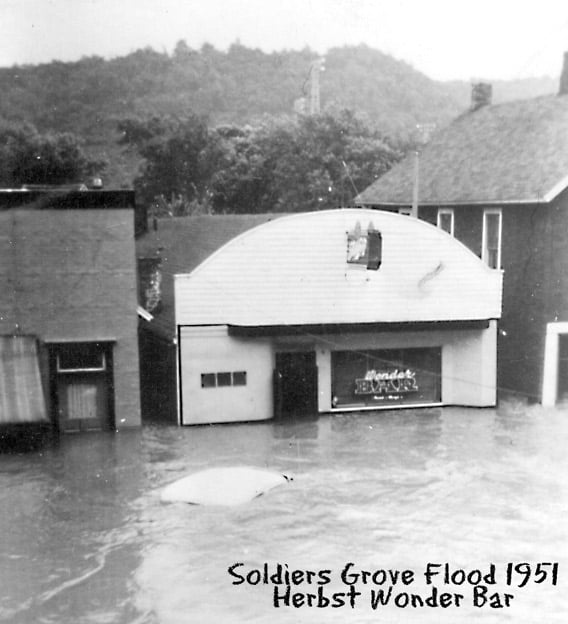 1951 Flood
1951 Flood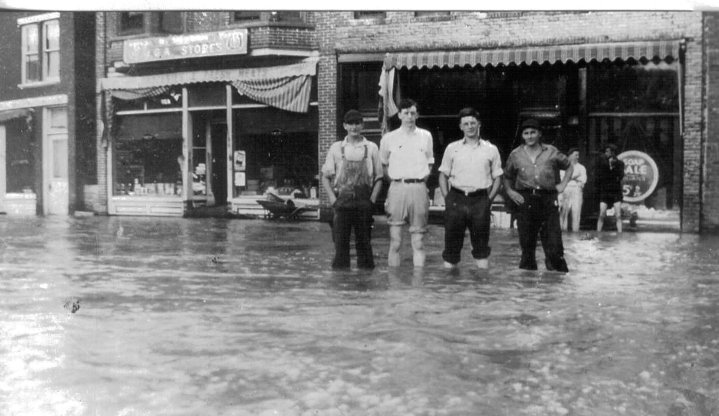 Flood
Flood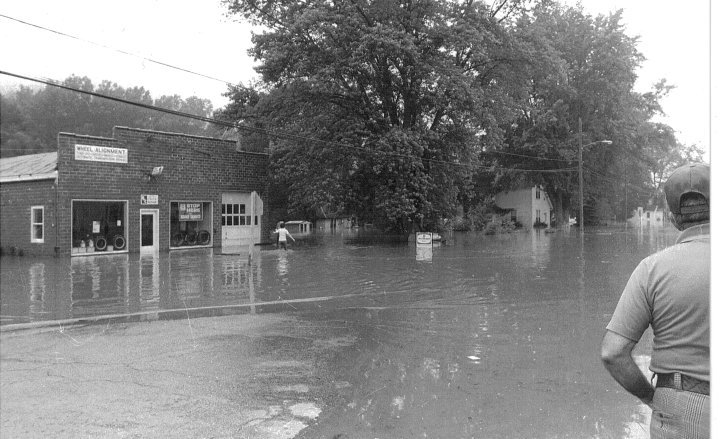 Flood
Flood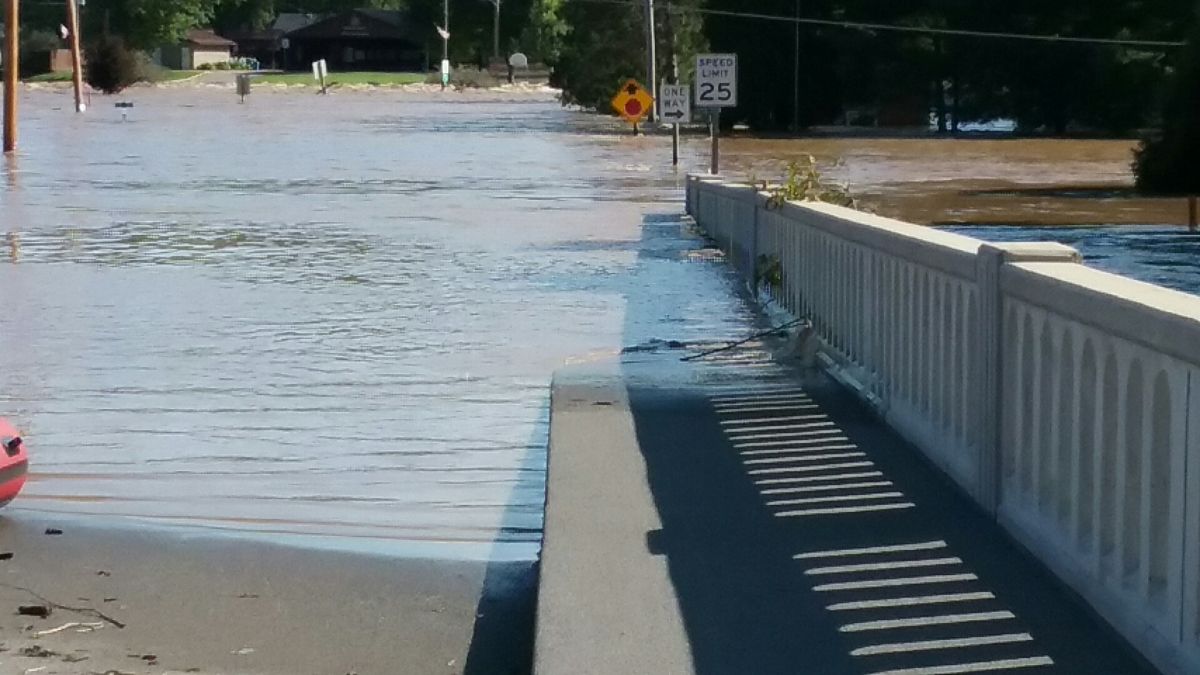 2018 Flood
2018 Flood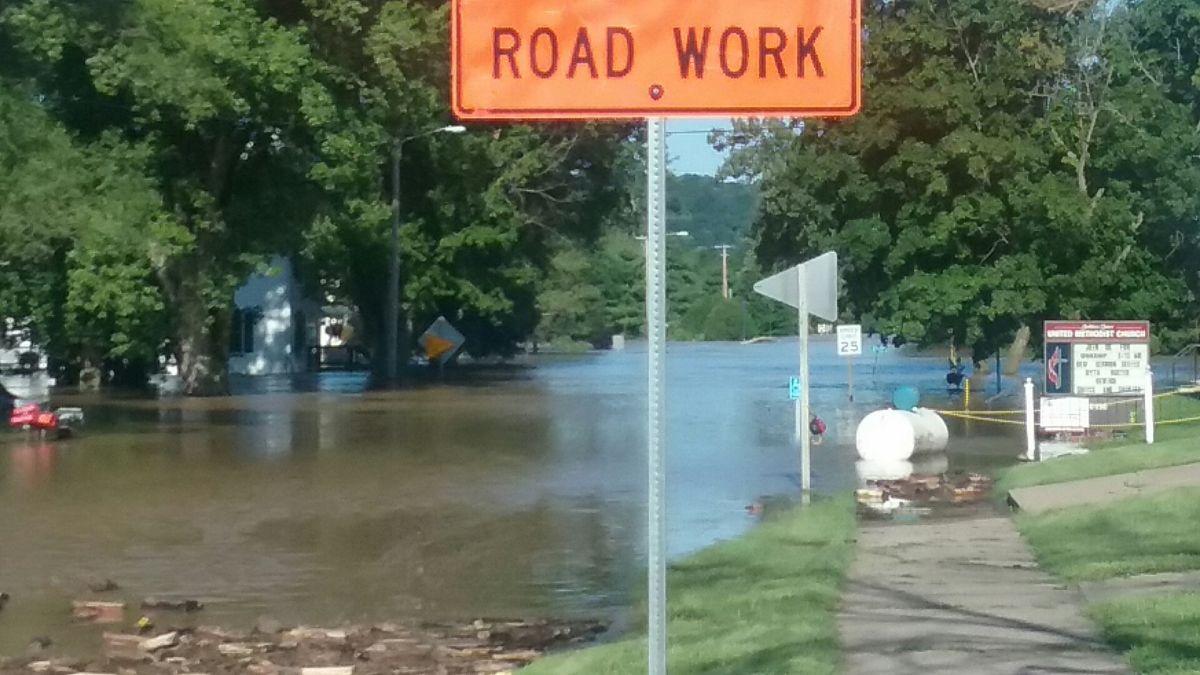 2018 Flood
2018 Flood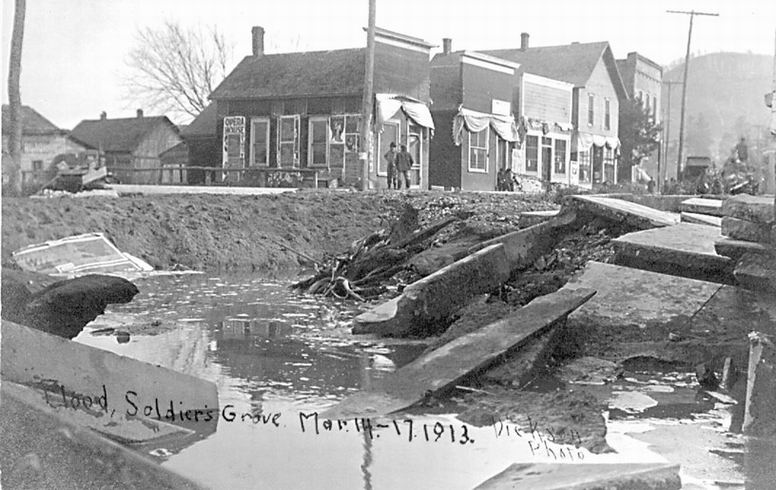 1913 Flood
1913 Flood